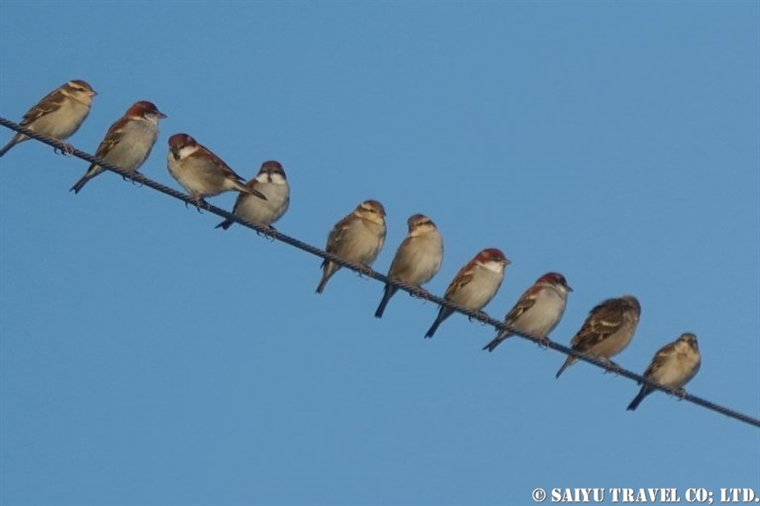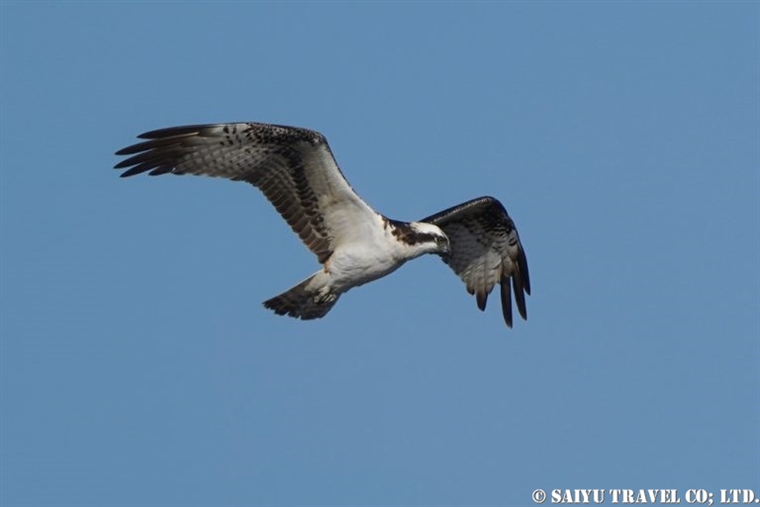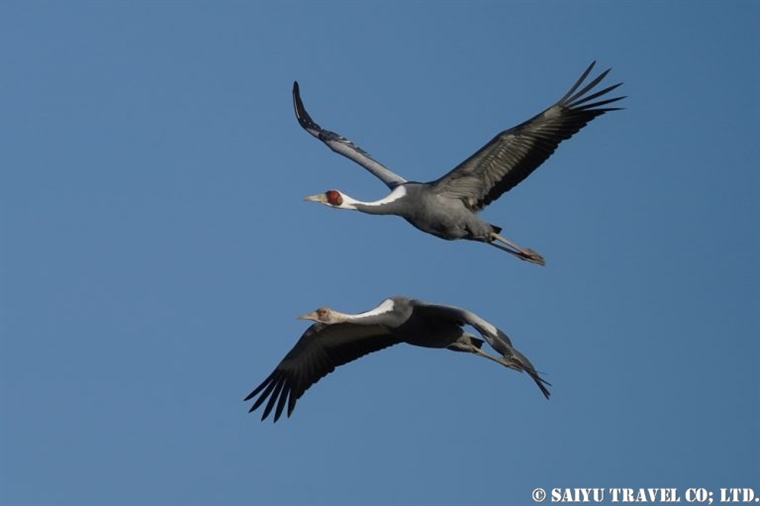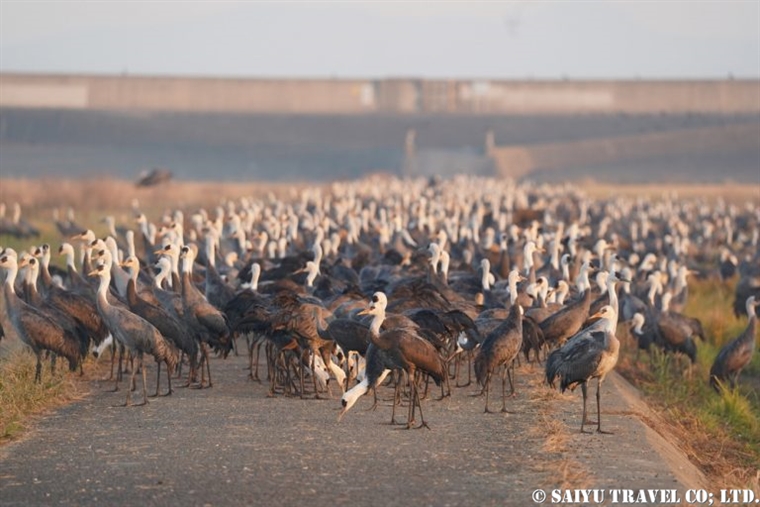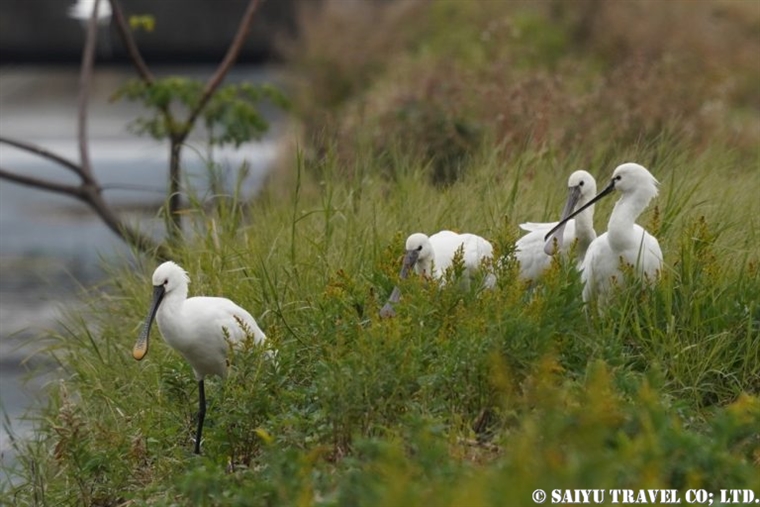There were two tours conducted in December 2022. This is the first tour report that took place Dec 12-16, 2022. Reported by bird guide, Yoshinori Toshitake.
Day 1
We gathered at Kagoshima Airport and headed to Izumi by private car. We arrived at Izumi in the afternoon and started looking for the cranes. First, I saw the Sandhill Cranes, but it was far away on this day, so I decided to look for the Common Crane and a Siberian Crane, while of course observing and photographing the White-naped Cranes and the Hooded Cranes.

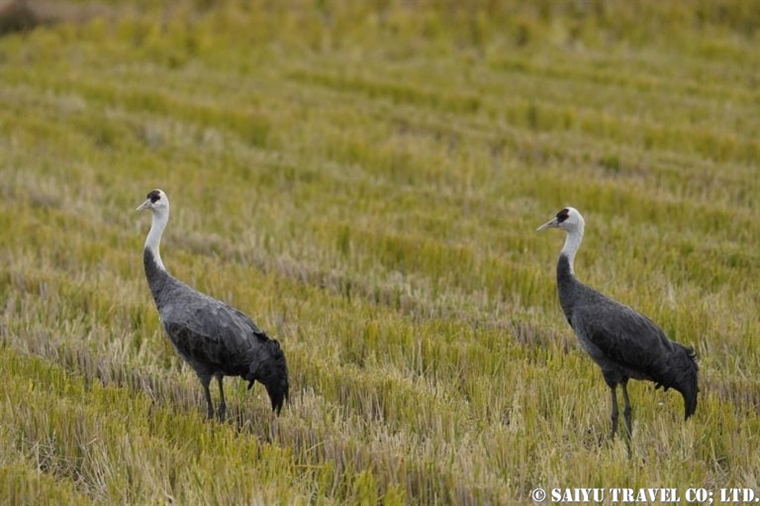
Day 2
We arrived at the reclaimed land while it was still dark, and first observed the sunrise and cranes. The cranes flying in against the backdrop of the sunrise was beautiful, and the participants were engrossed in getting their photos of the scene.


After the sunrise, I was aiming to see the Daurian Jackdaw, which was perched on the electric wires. On this day, I could see the white-colored one, known as “Shiromaru.”
、コクマルガラス(左2羽)-1.jpg)
After that, while I was watching cranes from the roof of the Observation Center, I found some Black Cranes hiding in the shadows of the road. I waited patiently, moved to a position where I might see the whole body of the cranes without the other cranes blocking it. This year, the number of cranes is a bit less than normal, but it is all a matter of timing if you can see them or not.

While I was waiting for this crane to come out from the flock, a Perigrine Falcon also appeared, and the ducks that were foraging in the farmland got pretty riled up by it.
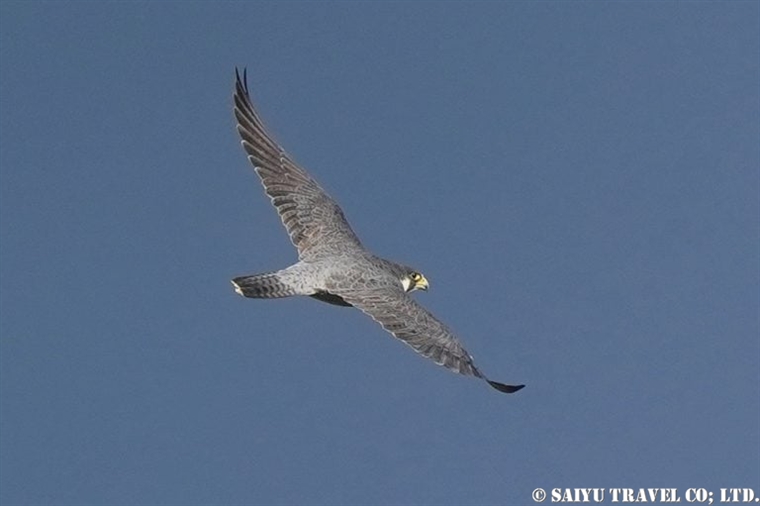
Then, we tool a walk along the river, where we aimed to find the European Peduline Tit and the Chestnut-eared Bunting. We could first, hear the calls of the tit, out on the reed bed, but they appeared pretty close by eventually. It is a very small bird, but it didn’t sing at all while observing it, so it took quite a while for everyone to be able to spot it.
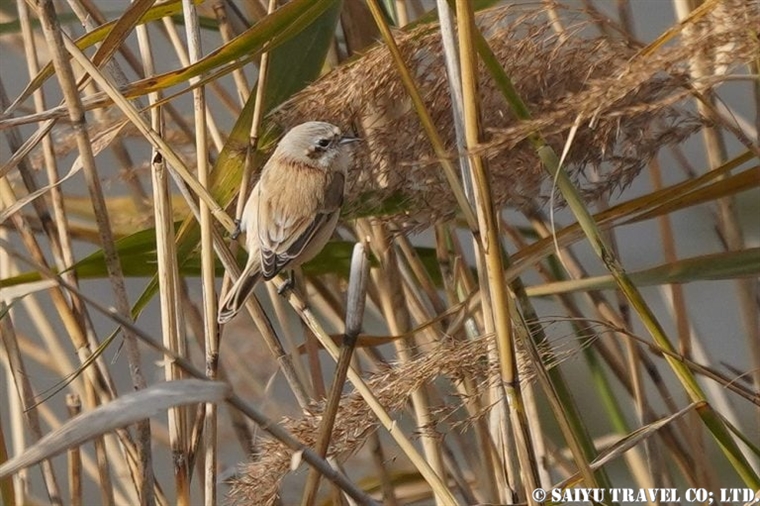
The Chestnut-eared Buntings were perched on the concrete embankment, and an Osprey was observed bathing in the river. Ospreys are often only seen in flight, so it is quite rare to see them in the water.
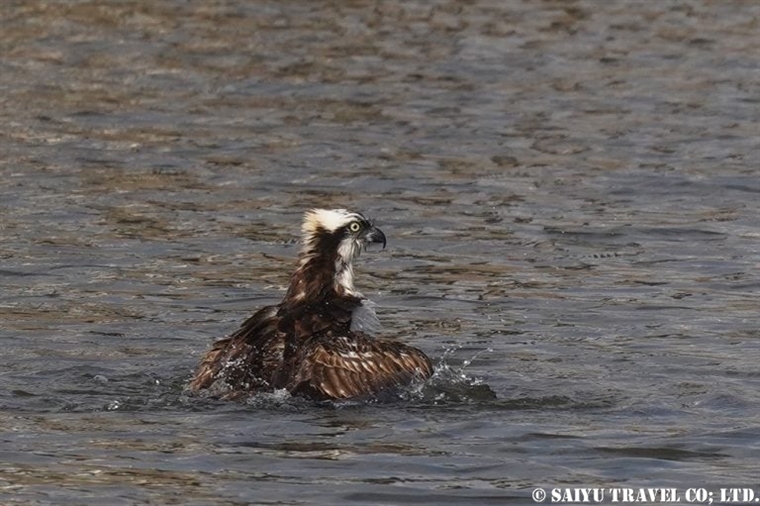
In the afternoon, we went into the mountains and looked at the dam and along mountain streams. The Mandarin Duck were still very cautiously avoiding us, and the Mallards, Eurasian Wigeons, and Common Pochards were seen in the water near the dam. While I was scanning for Mandarin Ducks in the darker areas of the edges of the water, I saw a Mountainhawk Eagle gliding, for just a moment. And as I approached the area of the Crested Kingfisher, I found one perched on some driftwood. The kingfisher flew away and then landed on a dead tree, so I tried to put it in the scope while informing everyone, but it flew off again immediately. Also, on the way back, when crossing the bridge, I heard the call and saw the flight of the kingfisher. Surprisingly, there were two that flew together in the upstream direction of the river. In the evening, we returned to the reclaimed land and observed Eurasian Spoonbills and Northern Lapwing.
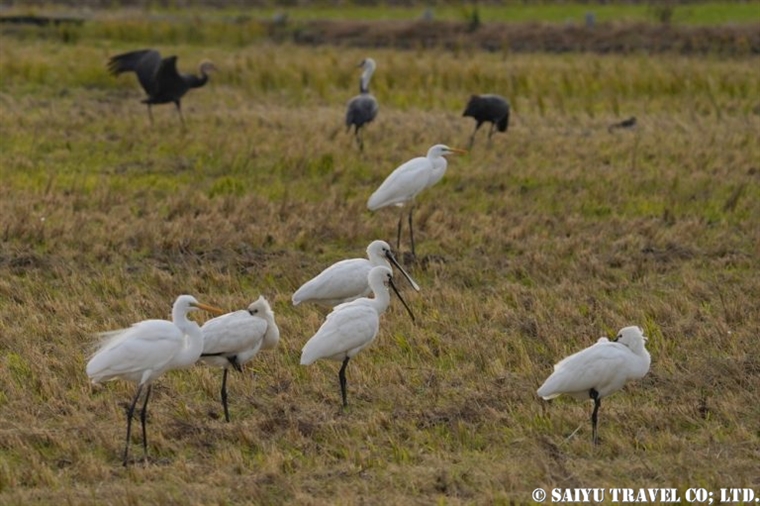
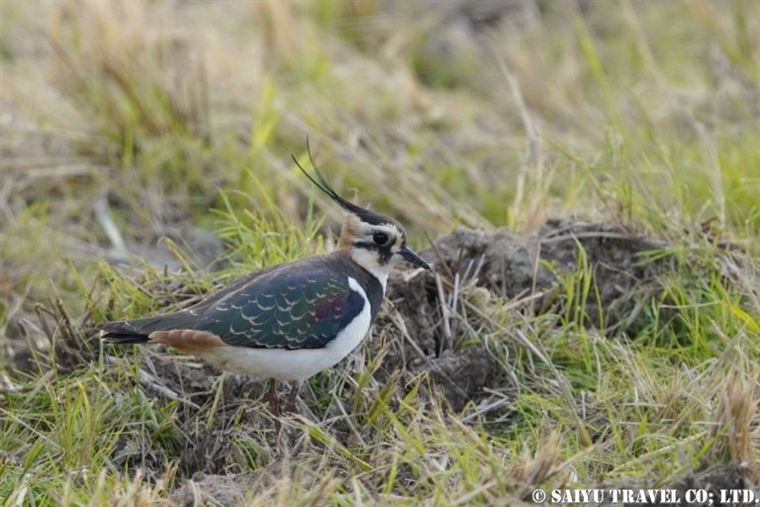
Day 3
We arrived at the reclaimed land while it was still dark, but unfortunately the clouds were so thick that we could not see the sunrise or the moon. I was waiting in the car, regretfully thinking that it would be useless to try to observe anything, but a Siberian Crane appeared. The Siberian Crane was easy to observe last year, but it was rare to see them this year.
とソデグロヅル(手前)Izumi-Crane-Japan-Ariake-Sea -1.jpg)
We left Izumi early to catch the ferry before noon and headed to Kumamoto. The ferry heading to Shimabara was bustling with the Black-headed Gulls looking for snacks from the passengers even before our departure. I don’t know how many there were, but after the ship left the port, many of them continued to follow the ship.
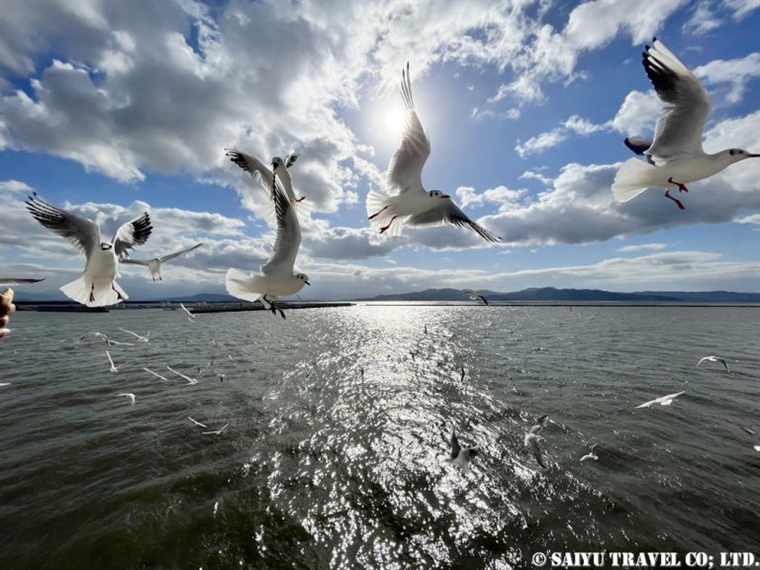
After leaving the port, we observed a large flock of Brown Boobies resting on the embankment, and that day, there were also some flying near our ship.
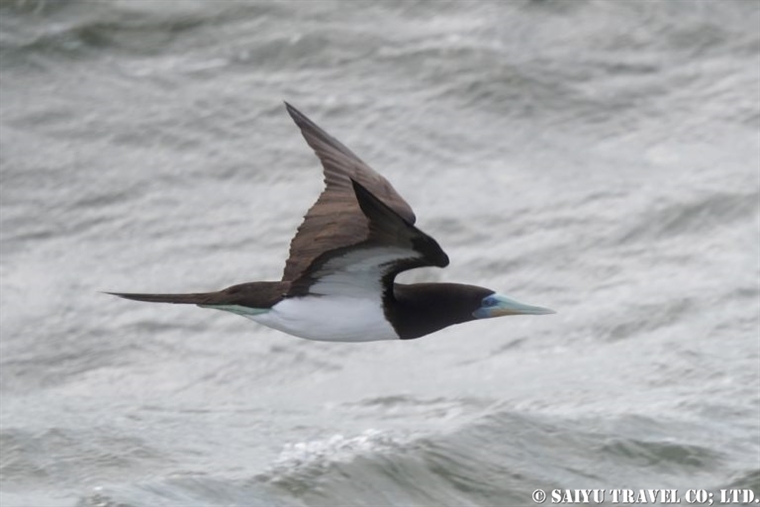
The Isahaya Reclaimed Land has vast cultivated farmlands and reed beds. In the field of reeds, there were various species we observed, such as the Hen Harrier and Common Reed Bunting. The Common Starling and Common Kestrel were seen and photographed in the farmland areas.
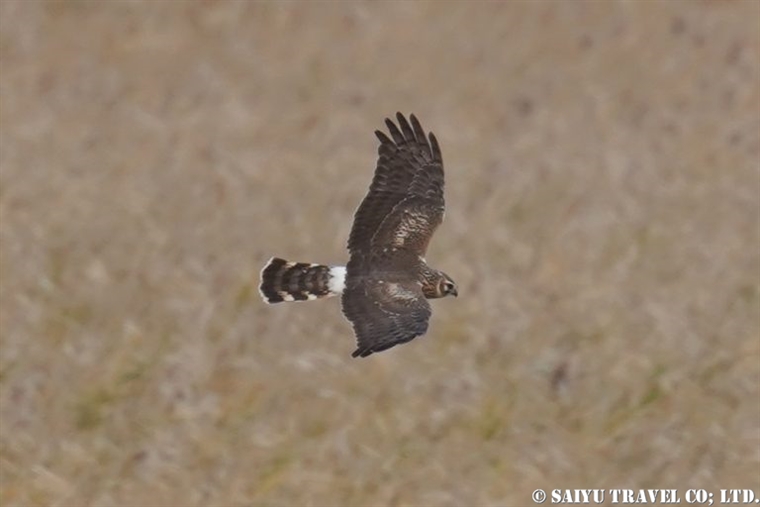
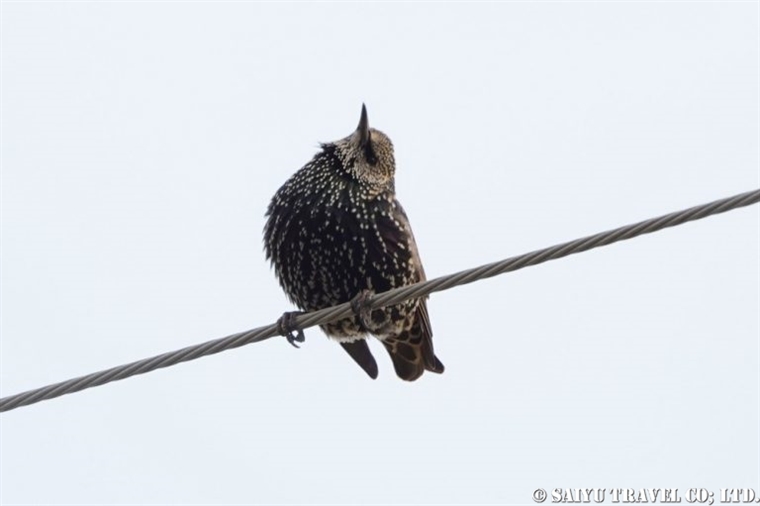
Day 4
In the morning, we visited the Isahaya reclaimed land again. Birds of prey such as the Common Kestrel and Common Buzzard can be seen around the reed bed. The Merlin was also observed targeting hunting the small birds on the edge of the grass.
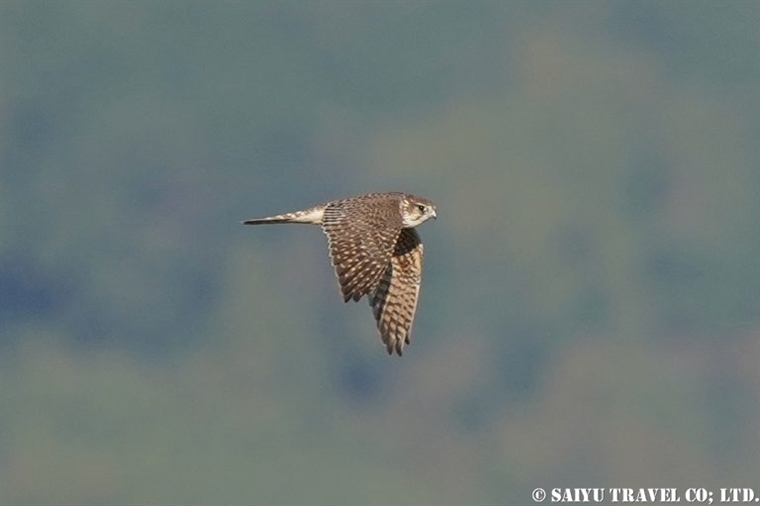
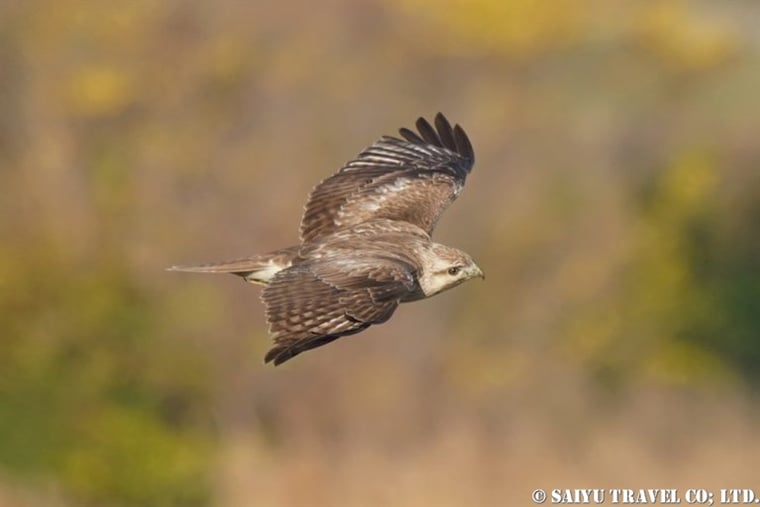
In the afternoon, we moved to Higashiyoka in Saga Prefecture, and observed the mud flats at high tide. On this day, the tide level was much lower than normal even, though it was high tide, and the mud flats were dotted with shorebirds, Common Shelducks, Saunder’s Gulls, and other species of birds.
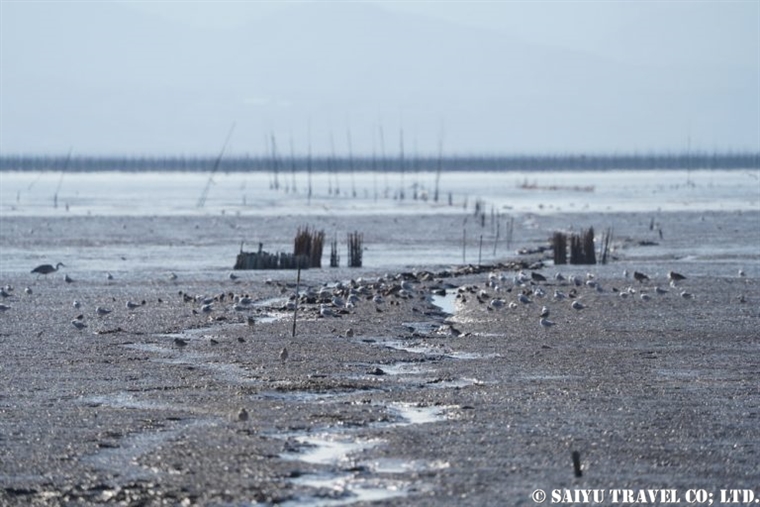
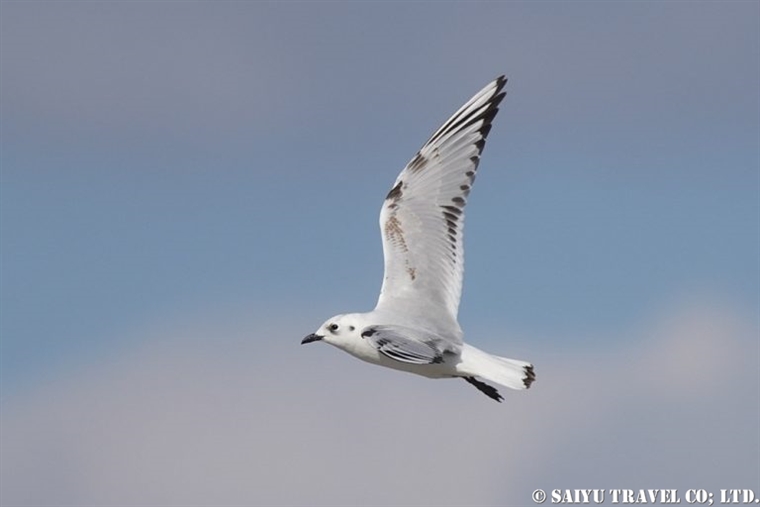
On the way from the mud flats back to the hotel, we found a magpie, which I rarely see anymore. It was observed perched on a powerline, and then on the roofs of the houses.
Day 5
Since we saw the magpie yesterday, I changed the plan and headed to the reservoir first instead. We could see the thousands of Bikal Teal, very alive and well, and the large flocks of them were spread across the open water.
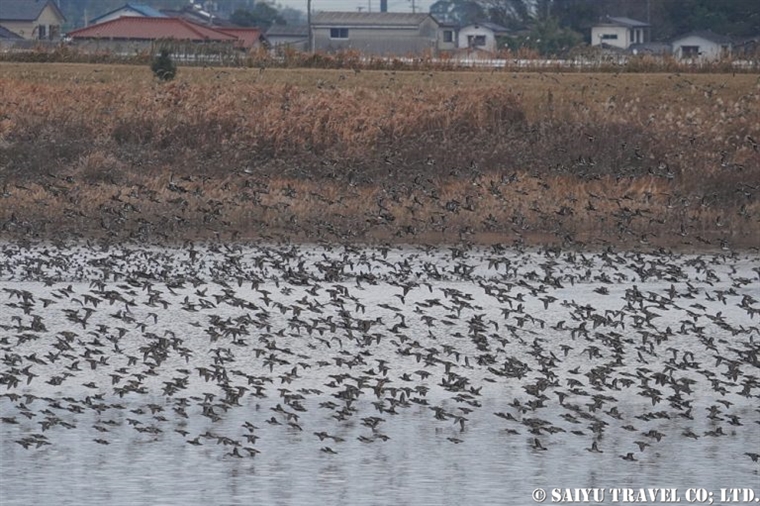
Here, we took a walk on a paved road, less than 3km, and enjoyed watching the large flocks of Baikal Teal, as well as being able to see birds of prey, such as the Northern Goshawk and smaller birds, such as the Common Reed Bunting. After that, we went up the river and observed Common Kingfisher, Long-billed Plover, Brown Dipper, etc. in the stream with clear water. Then we headed to Fukuoka Airport, and ended our tour there.
(99 Confirmed Species)
Photo & Text: Toshitake YOSHINARI
Observation: 12-16 Dec 2022, Ariake Sea, Izumi
*Contact us, Saiyu Travel for more information about wildlife and bird watching in Hokkaido. We can make various arrangements for your trip.
*Youtube : Wildlife of Japan
Tags: Hooded Crane, White-naped Cranes, Wildlife of Japan, Sandhill Crane, Birds of Japan, 出水, Birds Photography of Japan, Bikal Teal, Kagoshima, Birding tour Japan, Crane photography, Crane photography Izumi, Izumi, Kyushu Birding, Ariake Sea, Crane Migration Site




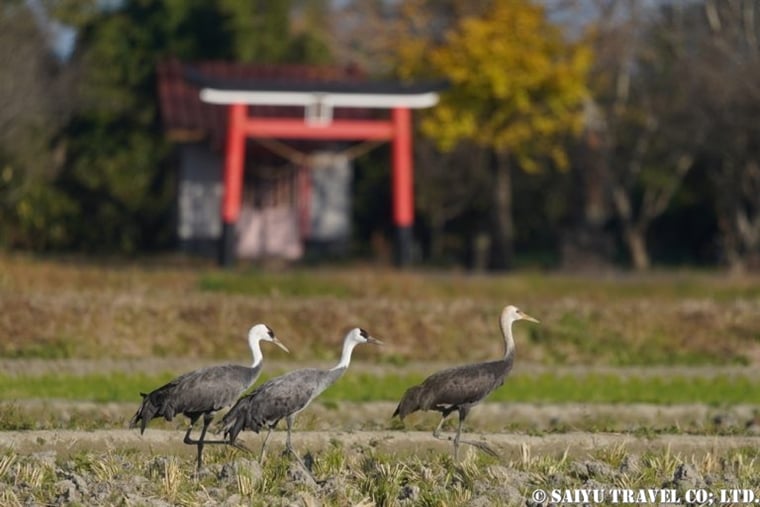
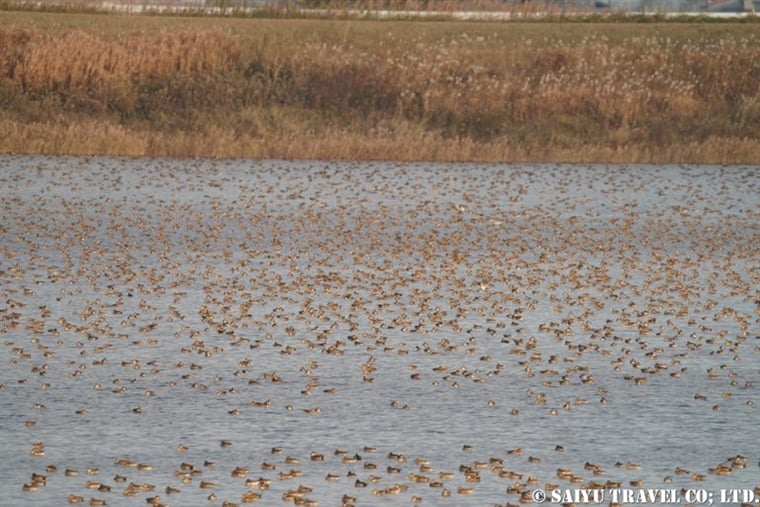
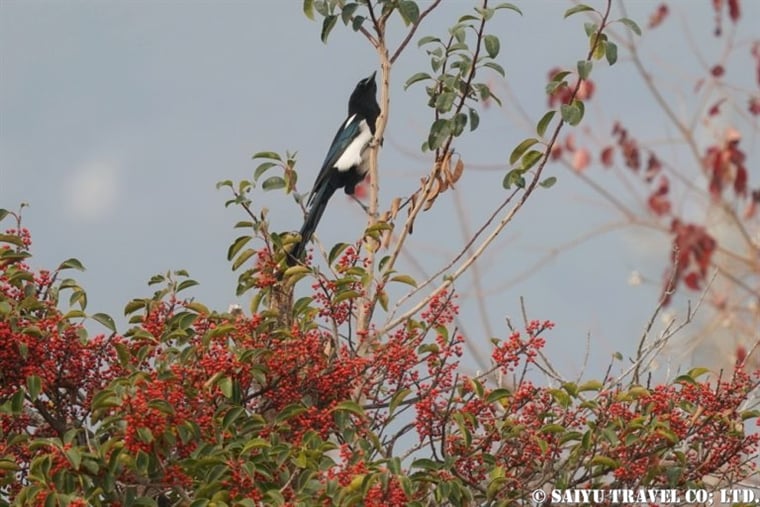
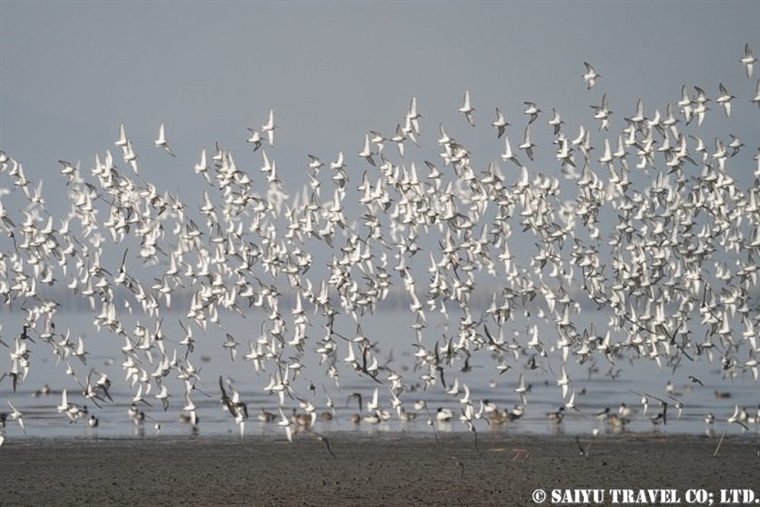
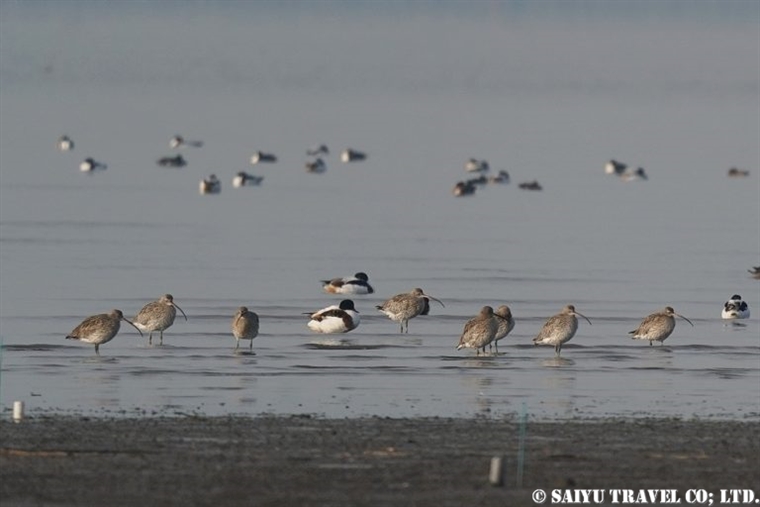
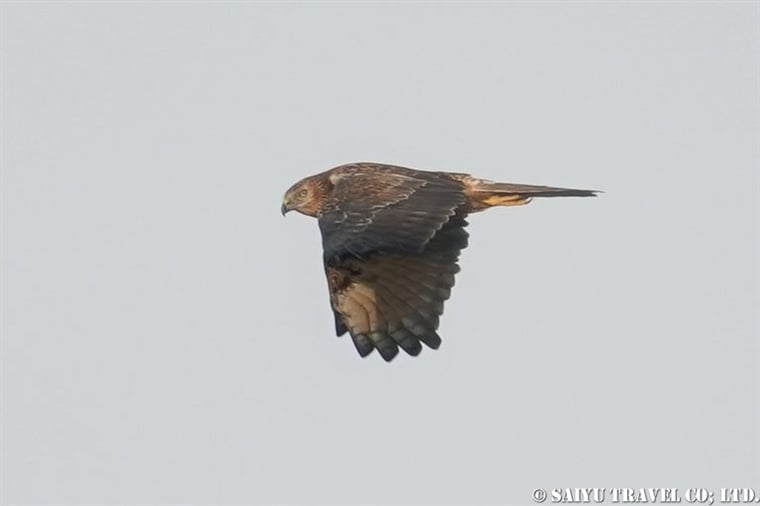
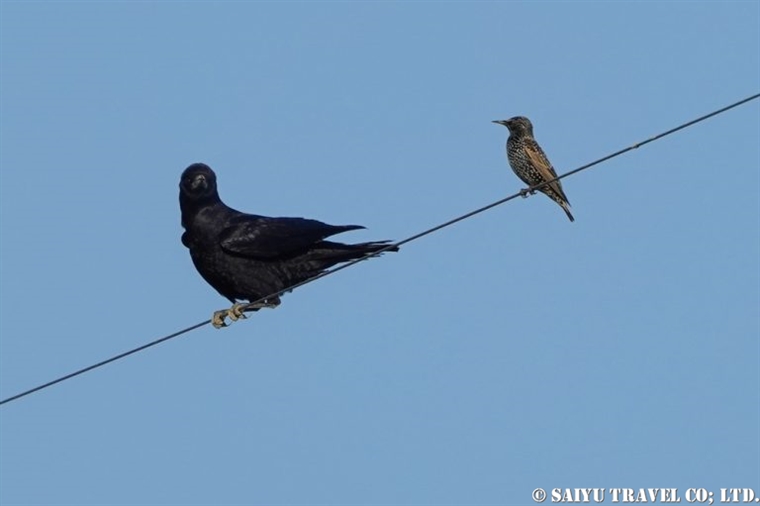
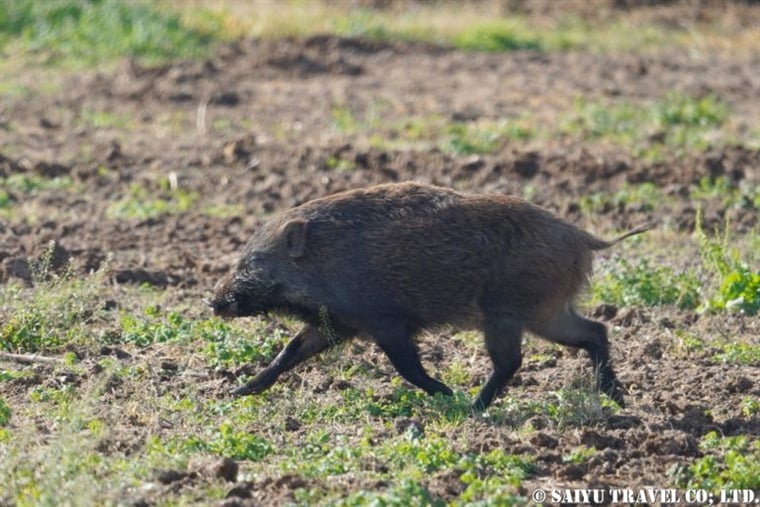
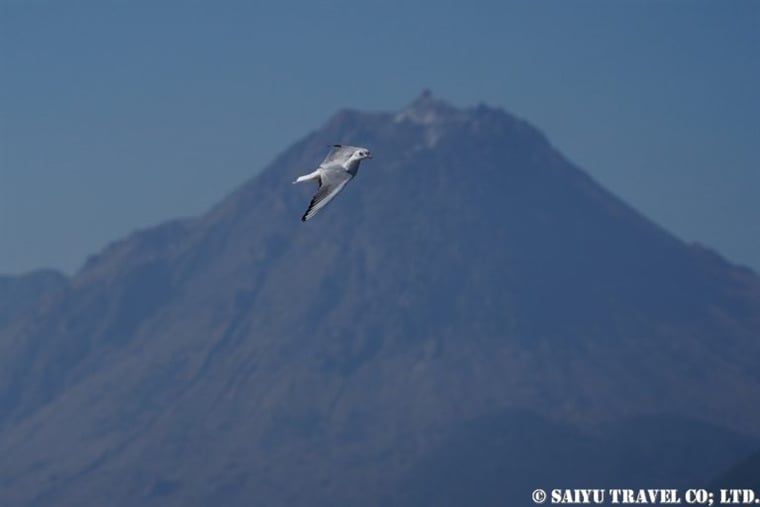
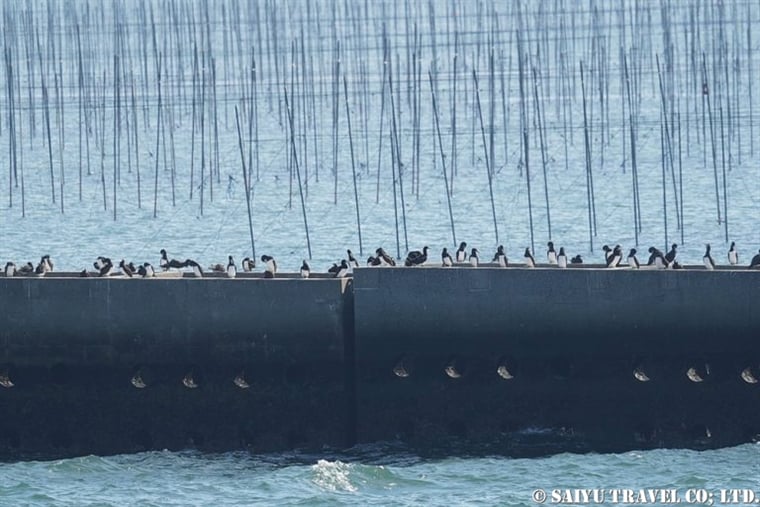
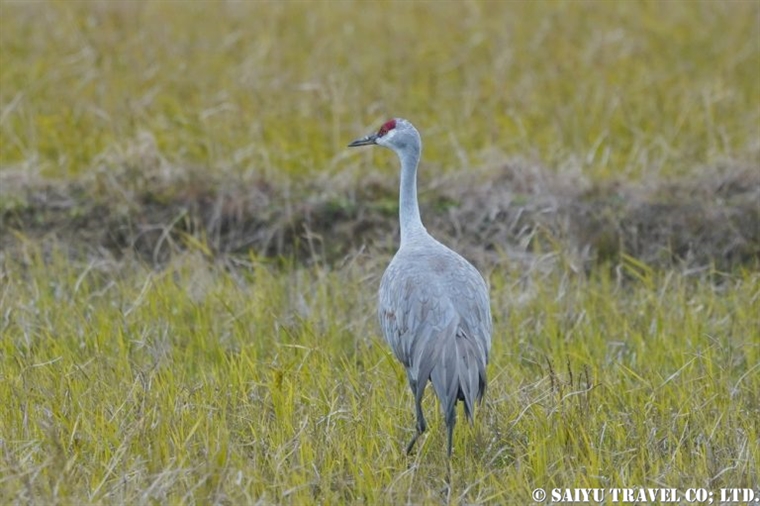
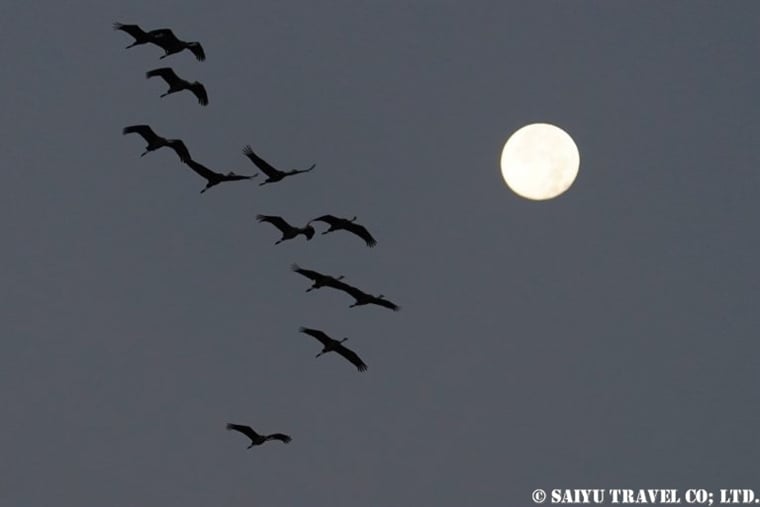
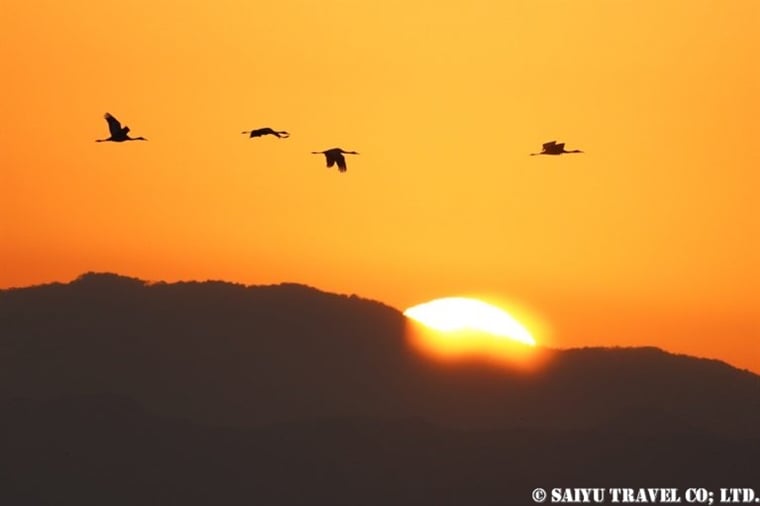
とミヤマガラス.jpg)
